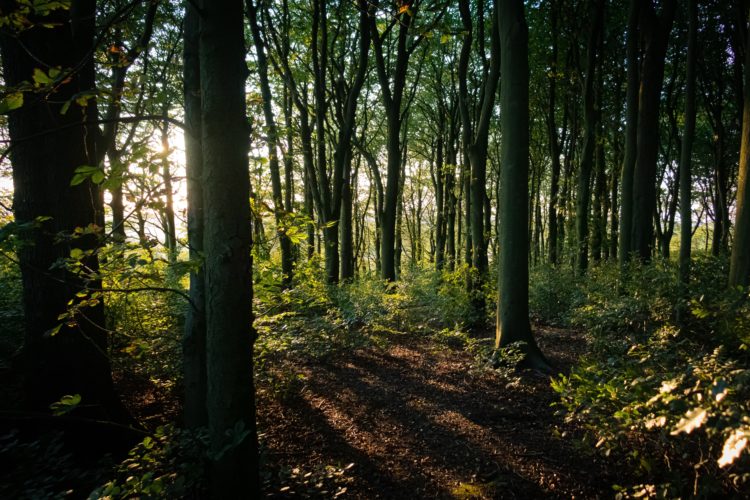£20 million funding will improve tree planting stocks, woodland resilience, domestic timber production and accelerate tree planting across England.
Projects that tackle some of the greatest threats to our trees and forests will get a boost from government funding, it has been announced on Monday 28 November. This is alongside additional investment announced for local authority tree planting initiatives which will see hundreds of thousands of trees planted in communities across England.
The funding will drive long-term woodland creation efforts, create jobs, boost biodiversity and support innovative approaches to tree health and resilience, in the face of climate change and the mounting threat of pests and diseases.
Successful applicants include:
- the University of Lincoln’s ISILDUR project, which will work with tree nurseries to address labour shortages in the forest nursery sector by developing an intelligent robotics solution for plant processing;
- the University of Cambridge’s TIMBER project, which is designing and creating prototypes for new building materials to drive home-grown, low-carbon and long-lasting construction nationwide;
- Red Squirrel South West, which will be given funding to develop a management programme for invasive grey squirrels across a 35-mile stretch of native North Exmoor coastal woodland, helping to regenerate woodlands and supporting the reintroduction of native species like red squirrels.
The United Kingdom consumes 53 million tonnes of wood and wood products each year; however, 81% is imported from abroad. The major investment announced today will support projects developing new technologies and working practices to help homegrown timber production meet a greater proportion of domestic demand.
This will help to improve timber security and grow the United Kingdom’s forestry and primary wood processing sectors, which support 30,000 jobs and contribute over £2 billion to our economy every year.
Alongside this, 57 local authorities across England have received nearly £10 million in funding through the Woodland Creation Accelerator Fund to kickstart tree planting activity, create new green jobs and boost access to nature, such as by employing new staff to access the professional expertise needed to drive tree planting and woodland creation activity at a local level.
Planting will take place across the country in areas with lower tree cover, as well as through ambitious schemes expanding existing woodlands in rural settings. It is expected that more than 100 new green jobs will be created across the country as a result, with an emphasis on upskilling professionals from outside the forestry sector. This will help to expand the industry’s workforce, address skills shortages and help to grow the economy.
Trudy Harrison, Forestry Minister, said:
Our trees, forests and woodlands are the nation’s lungs – filtering our air, capturing carbon, providing habitats and serving as a powerful weapon in the fight against climate change. At a local level, trees are the lifeblood of communities, essential to supporting wellbeing, beautifying our streets and improving people’s quality of life while providing a safe haven for wildlife.
Protecting and restoring our precious natural world can work hand-in-hand with building a stronger, healthier economy. Using new technologies through these funds will build a bigger, better and more resilient forestry industry for the future, as we strive to deliver on our commitment to leave the environment in a better state than we found it.
Sir William Worsley, Chair of the Forestry Commission, said:
These funds will unleash the potential of the forestry sector by championing nurseries, charities and businesses operating at the forefront of technological innovation. They will help more people across society get trees in the ground at an unprecedented pace and scale, whilst ensuring their resilience for future generations.
Through the Woodland Creation Accelerator Fund, local authorities have set out a range of inspiring and ambitious plans which equate to more than 10 million trees being planted on public land across England by 2025. The funding will turn these aspirations into results, marking a significant step forward in our collective efforts to increase tree planting rates in England.
The urgent environmental and economic challenges of the day demand innovative solutions and the projects supported through the innovation funds will underpin our collective efforts to build larger, more diverse and more resilient treescapes across the country, whilst opening up new markets for timber and creating opportunities for growth.
Hannah Bartram, Chief Executive Officer, Association of Directors of Environment, Economy, Planning and Transport, said:
The Woodland Creation Accelerator Fund is set to make a real difference, supporting local authorities to accelerate their tree and woodland planting plans and helping to tackle the climate change and biodiversity crises.
The fund has been well received and demand has been high – it will support local authorities across the country, equipping them with the new staff, skills, and expertise needed to drive tree planting and woodland creation commitments.
Trees make our towns and cities healthier and more pleasant places to be, helping to moderate temperatures, reduce pollution, decrease flood risk and improve quality of life for people from all socio-economic backgrounds.
Also announced today, the Local Authority Treescapes Fund (LATF) and the Urban Tree Challenge Fund (UTCF) will reopen for new applications early in 2023, with some significant improvements to the funds based on stakeholder feedback.
Now in their third and fifth rounds respectively, the reopening of both funds will see trees planted in rural areas (for LATF), as well as in towns and cities nationwide. It represents another step forward in the Government’s drive to treble tree planting rates across England by the end of this Parliament.
This announcement forms part of wider government action to recover and restore nature, as part of the 25 Year Environment Plan and commitments to reach net zero by 2050.
 https://www.maelor.co.uk/wp-content/uploads/2022/11/IMG_7721-500x333.jpg
https://www.maelor.co.uk/wp-content/uploads/2022/11/IMG_7721-500x333.jpg






